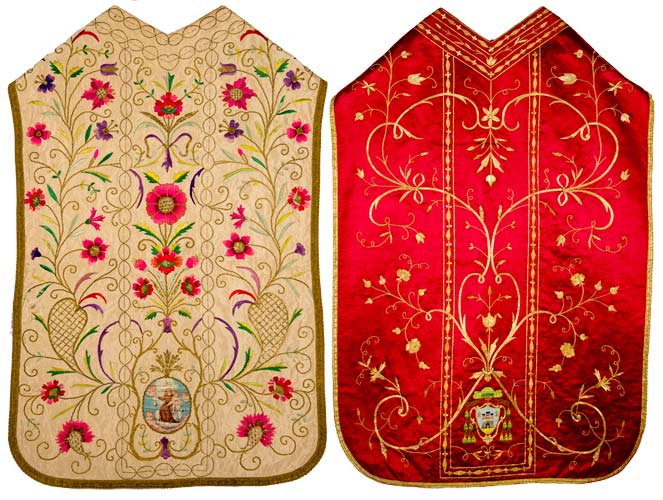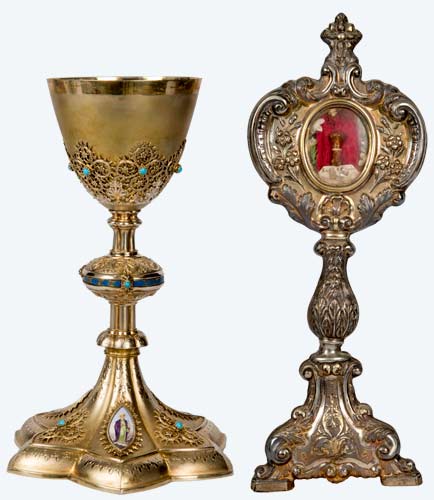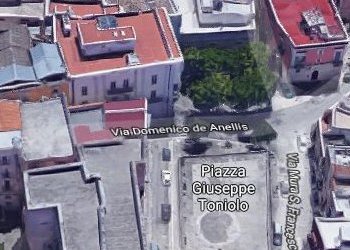
ALTAR DECORATIONS AND MISSAL LITURGICAL VESTMENT SETS
The celebration of the Mass is a very complex ritual in which every gesture has a specific meaning. Within this ancient ritual, vestments, altars, cloths and holy vessels play a specific role as well as the objects of the catholic liturgy, which have been intended both for the priest (vestments) and for containing and conserving the Consecrated Host (holy vases) as well as for decorating the altar and the church where the rite takes place.
From the liturgical simplicity of the first centuries of Christianity the Eucharistic celebration has turned over time into a more definite ritual. A new concept has emerged, according to which the objects that are used during the liturgical service should stand out for their richness from the common objects; the holy decorations should be more or less made of precious materials depending on how much in contact they get with the holy Eucharist.
Also the decoration of the holy objects meets precise liturgical needs, such as the choice of specific topics, characters and subjects.
According to Pius V's 1570 Missal liturgical vestment sets generally consist of chasubles, dalmatics, tunics, copes along with accessories such as maniples, pouches, chalices, veils and stoles, all made of the same precious fabrics and richly adorned.
Religious vestments derive from the secular clothing used in the Roman times. Over time the Church has expressed and spread its liturgical message also trough specific colours intended for ornaments and vestments. The white vestments worn by the priests of the Early Christianity, for example, recalled the whiteness of angels, saints and martyrs even if there wasn't a "dress code" for the clergy at the time. The rules changed in the following centuries until reaching the current ones set in Pio V's Roman Missal (1570), which allow five main colours: white, red, black, violet and green.

Address: via De Anellis n. 48, angolo piazza Toniolo 5, 6, 7, 8.
Phone: +39 0883593382
Email: museodiocesano@diocesiandria.org
Andria diocese's web address



